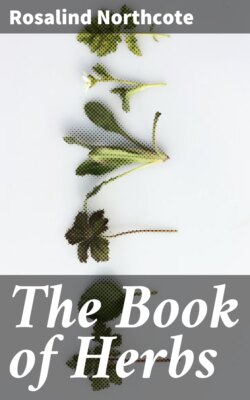Читать книгу The Book of Herbs - Rosalind Northcote - Страница 17
На сайте Литреса книга снята с продажи.
Cives, or Chives, or Seives (Allium Schænoprasum).
ОглавлениеTable of Contents
Straightways follow’d in
A case of small musicians, with a din
Of little Hautbois, whereon each one strives
To show his skill; they all were made of seives,
Excepting one, which puff’d the player’s face,
And was a Chibole, serving for the bass.
Britannia’s Pastorals, Book III.
Cives and Ciboules are often mentioned together, as in this account of King Oberon’s feast. The leaves are green and hollow and look like rushes en miniature, and would serve admirably for elfin Hautbois. Miss Amherst[18] says that they are mentioned in a list of herbs (Sloane MS., 1201) found “at the beginning of a book of cookery recipes, fifteenth century.” She also tells us that when Kalm came to England (May 1748) he noticed them among the vegetables most grown in the nursery-gardens round London. They were “esteemed milder than onions,” and of a “quick rellish,” but their fame has declined in the last hundred years. Loudon says that the leaves are occasionally used to flavour soup, salads and omelettes—unlike ciboules, the bulb is not used—but the chief purpose for which I have heard them required is to mix with the food for young guinea-fowls and chickens.
[18] “History of Gardening in England.”
